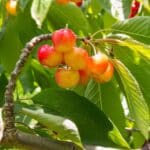Bonsai is an age-long Japanese form of gardening. There are many plants to choose from in bonsai, but the bougainvillea stands tall above them.
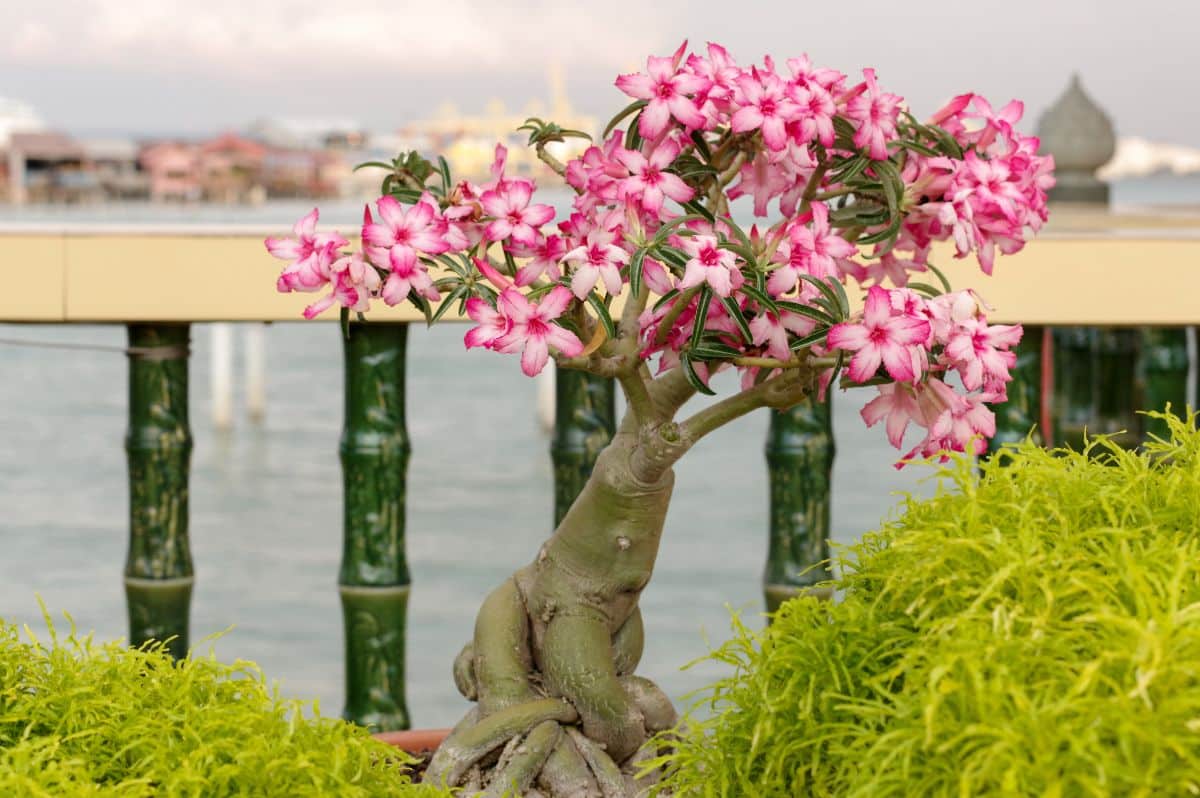
It deserves this spot due to its fast-growing nature, repeated blooms, and versatile functions. Above all, the bougainvillea is one of the easiest bonsai plants to grow in the low desert.
The bougainvillea is found used in bonsai in places where the climate is mild. Even as a newbie, getting acquainted with the excellent growth guide for the bougainvillea will see you growing them like an expert.
Here’s how to grow bougainvillea bonsai!
Jump to:
Important Facts About Bougainvillea Bonsai
| Genus Name | Bougainvillea |
| Scientific Name | Bougainvillea |
| Plant Family | Nyctaginaceae |
| Native Area | South America |
| Plant Type | Tropical/subtropical |
| Height Size | 20 - 30 cm mature Size |
| Sun Exposure | Full sun |
| Soil Type | Rich foamy soil, well-drained |
| Soil PH | 6 - 6.5 |
| Bloom Time | Summer, on & off all year round |
| Flower shape | Triangle shaped |
| Flower Color | Magenta, pink, orange, yellow, purple, white etc |
| Hardiness Zone | Zones 9 - 11 |
| Toxicity | Toxic to humans and animals |
How To Grow Bougainvillea Bonsai
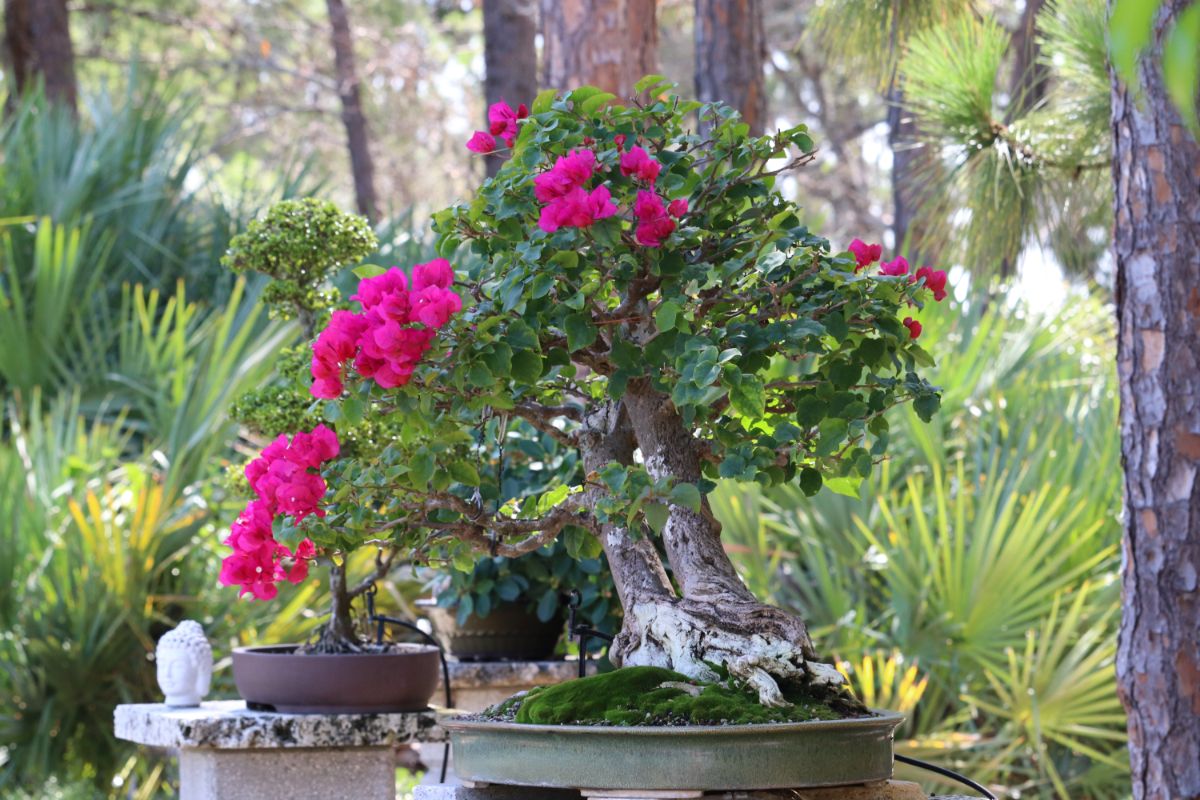
Knowing the right conditions of growth for the bougainvillea will see it grow and thrive for years on end. Bougainvillea in bonsai form detests frost and should be transferred indoors during winter.
Below are essential things you need to know when growing the bougainvillea.
Plant Placement Requirements
This plant is a sun-loving plant and must be kept in a place where it can enjoy full sunlight and a high temperature.
Full sunlight is required for them to flourish and produce flowers as when due.
To guarantee that the plants enjoy full sunlight, outdoor planting in a very sunny place is best. The tree should, however, be transferred to a cool room with adequate light with the temperature set as nothing above 59°F and below 50°F during autumn.
This is, however, not easily obtainable in a lot of homes, so it will be wise to consider other artificial alternatives.
Watering Requirements
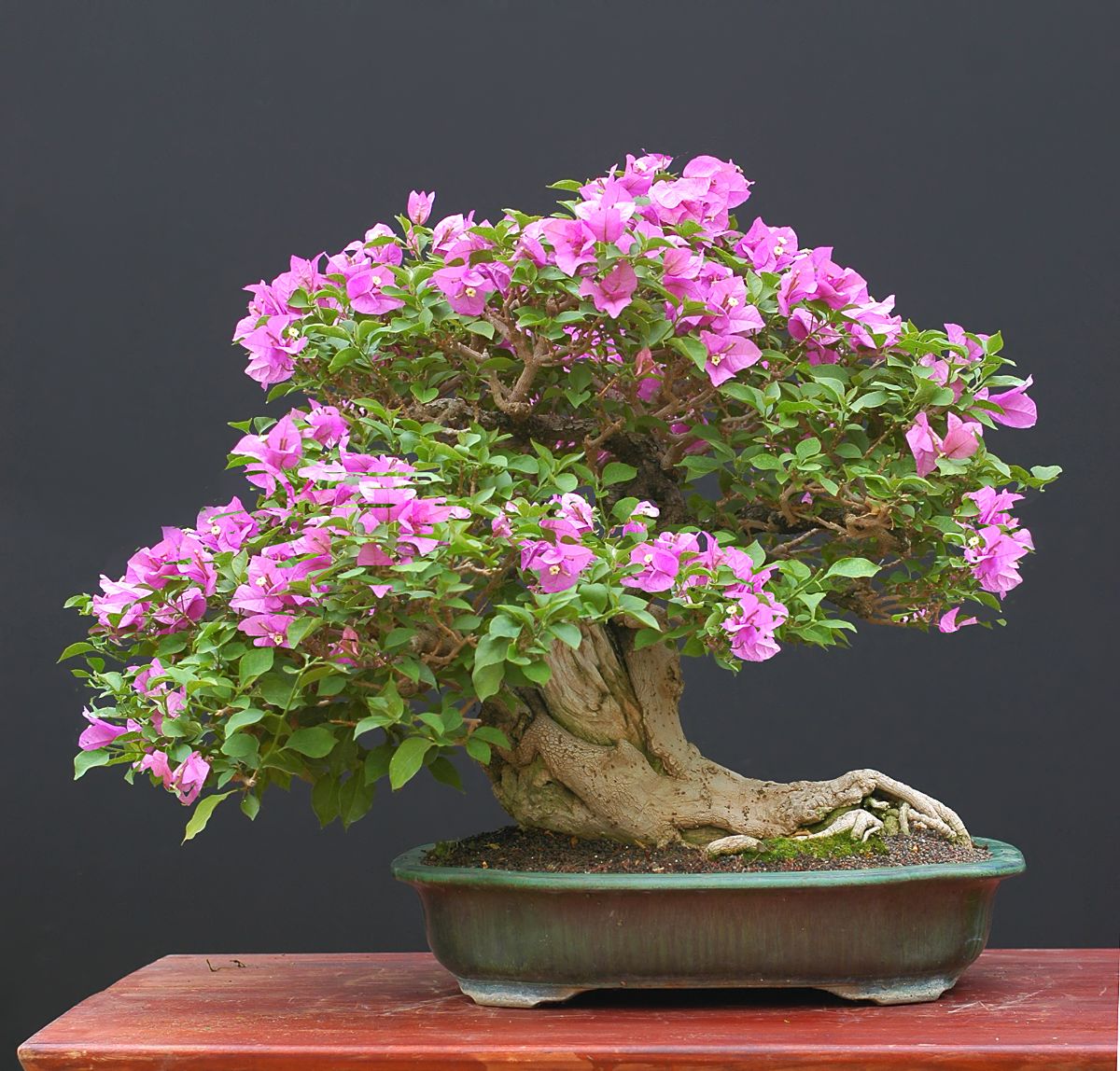
For the bougainvillea bonsai, watering is essential and must be done right. Stating how often the plant should be watered would be difficult as that information depends on several factors like the soil mix, climate, year's season, pot size, etc.
To this end, we can only say that the key to watering your plant right is to observe them keenly.
When should you water the tree plant?
It would help if you watered anytime you notice the soil is a little dry. You have no business watering the plant when the ground is still wet, which may lead to overwatering.
Overwatering would, in turn, lead to soggy soil, which can result in not just root rot but fungal issues and, at the same time, weaken your plant's immunity, making them susceptible to insects, diseases, and even death.
For the bougainvillea, the key is to avoid letting your tree dry out completely and, at the exact time, water when the soil is still wet.
The technique you can employ is to dip your fingers 1cm deep to check for soil moisture. If it's a little dry, that's your cue to water the plant.
Chalky or water-containing calcium carbonate should be avoided when watering this plant. Cold water should also be avoided as it might cool the tree too.
For the bougainvillea, rainwater is preferred as there are no added chemicals in it, but since that cannot be readily available all the time, tap water will suffice.
Thorough watering entails soaking the whole root system. Watering should only stop when the water can be seen seeping out from the drainage holes below. Observe the plant to see if a repeat of the process is necessary before you do.
Soil Requirements
When growing the bougainvillea, using the right soil mix is always encouraged.
This is because the right soil mix is one factor that determines how often you will have to water the plant.
Also, Bougainvillea will grow without issues in well-drained loamy soil mixed with organic matter, giving nutrients and much-needed oxygen-free access to the plant.
You can never go wrong with a soil mixture of lava rock, akadama, and pumice using the correct ratio. You can also come up with a compelling soil mix using compost.
Fertilizer Application
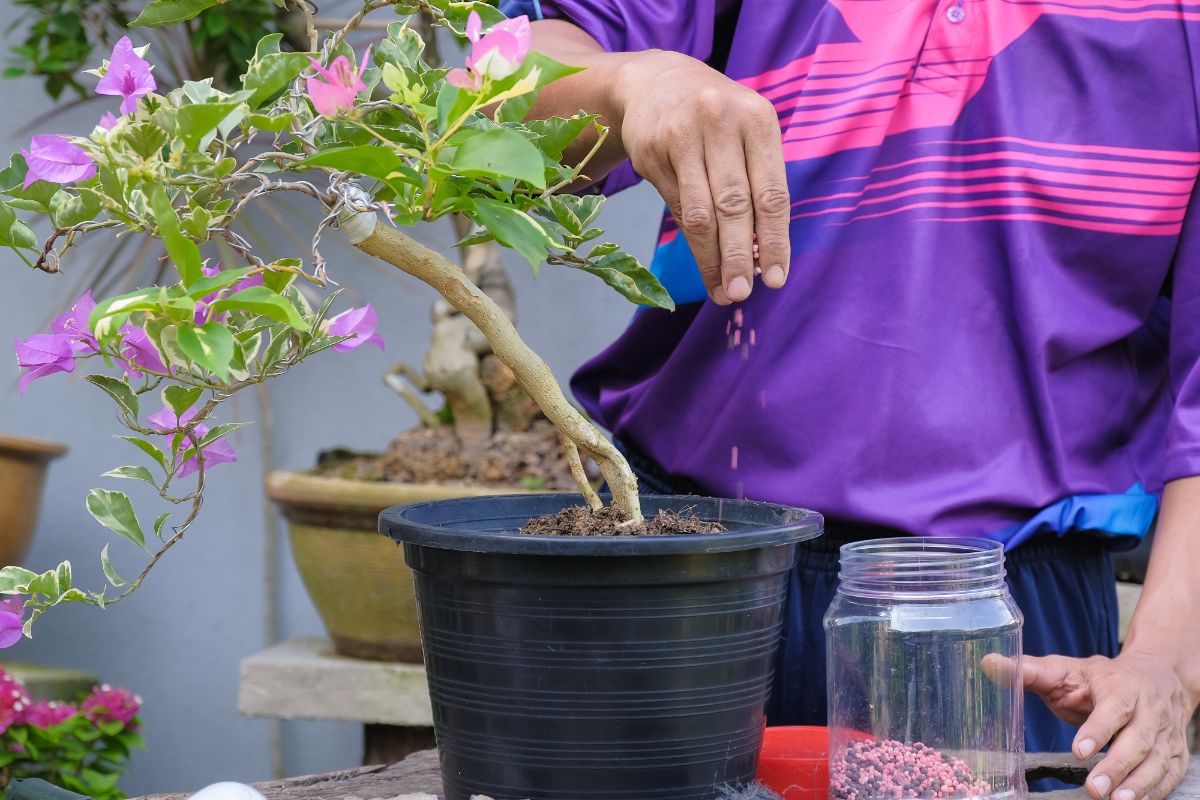
Fertilizer should be applied once monthly during the plant's active growing years.
The fertilizer should be a solid organic one. If you use a liquid-based fertilizer, the application should be increased to once weekly on the plants growing days and twice monthly during winter.
Please note that using a fertilizer that is high in nitrogen will affect the bloom of the plant. To be on the safe side, use a slow-release fertilizer, one that is probably 10-10-10.
Pruning Techniques
Pruning is one of the critical indices of growing your bonsai effectively. Knowing when to prune and how to go about pruning will be a bonus in this planting venture as well.
Pruning serves two purposes, either maintenance or structural.
Maintenance pruning is done to retain the existing shape of the tree, keep it looking tidy, enhancing its overall appearance. In contrast, structural pruning is aimed at pruning the tree into the form it should take on.
Structural pruning is usually more intense and requires a great deal of skill as cutting down large branches is involved. There is also the need to know what components should be cut off and which to stay.
When should you prune the bougainvillea tree?
Maintain the bougainvillea tree by constantly pruning all through March - September, as that stands as the active growing months of the plant.
Pruning should be focused on sniping out shoots or branches that might have grown out of shape. This will promote the consistent growth of the tree and thicker foliage. Also, see to the removal of withered or dead leaves during summer. This will encourage the tree to bring forth new leaves and, in the process, increase all round ramifications.
This method of shed leaf removal is known as defoliation.
Doing all these will make your tree look neat and beautiful.
Pruning can be carried out using a cutter or a twig shear.
Propagation Method
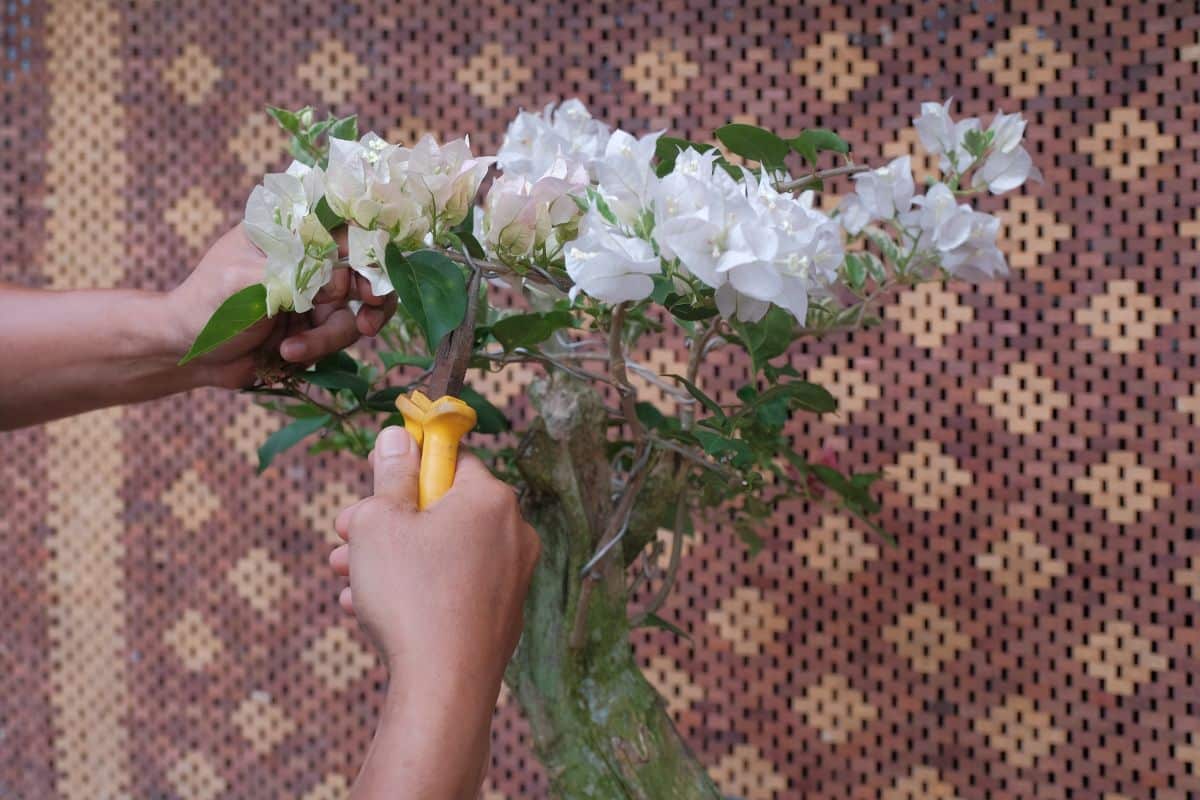
The best method to adopt in propagating the bougainvillea is using cuttings. You can make use of semi-hardwood cuttings or root cuttings.
Propagation is best carried out during summer or spring.
Repotting Method
Smaller bougainvillea can be repotted every two years, but for larger specimens, three to four years is ideal.
When repotting, remember to use the same soil standard as the mother plant. A well-draining soil should be used.
Transferring from the old to the new container should be done very carefully, as the yellowish roots of the bougainvillea are slender and very delicate. Care is to be taken as you disentangle them and place the root ball in the new container.
So that you know, shallow pots or containers that are no deeper than 3 inches are recommended. For best results, use a bonsai pot as they tick all the boxes a perfect pool should.
Common Pests And Diseases Of Bougainvillea Bonsai
The good thing about the bougainvillea bonsai is that you can keep them free from pest attacks by ensuring the proper conditions for their healthy growth.
This includes keeping the soil moist but not soggy and the plant kept where they can enjoy full light conditions.
If this is not done, you risk exposing your plant to pests like scale, aphids, powdery mildew, white flies, caterpillars, mealy bugs, etc.
Pest infestations can lead to different plant diseases and unhealthy growth. To control infestations, use pesticides and simultaneously see to the requirements of change that the plant demands.
Furthermore, prevent rot by cutting off withered flowers.
Frequently Asked Questions
Can bougainvillea be grown indoors?
The only way the bougainvillea can thrive indoors is if a high light supply is guaranteed. When temperatures fall below 45° at night especially, see that the tree is placed by the window.
All the same, the bougainvillea is better off placed outdoors during summer or Spring time.
Where does bougainvillea grow the best?
Any place where they can grow and spread out unrestricted, enjoy the maximum amount of sunlight for about 6 hours per day, and a site that isn't waterlogged to ensure the plant is safe from root rot is best too. Grow the bougainvillea.
Hillside is a fine example of a place with the above features.
Final Note
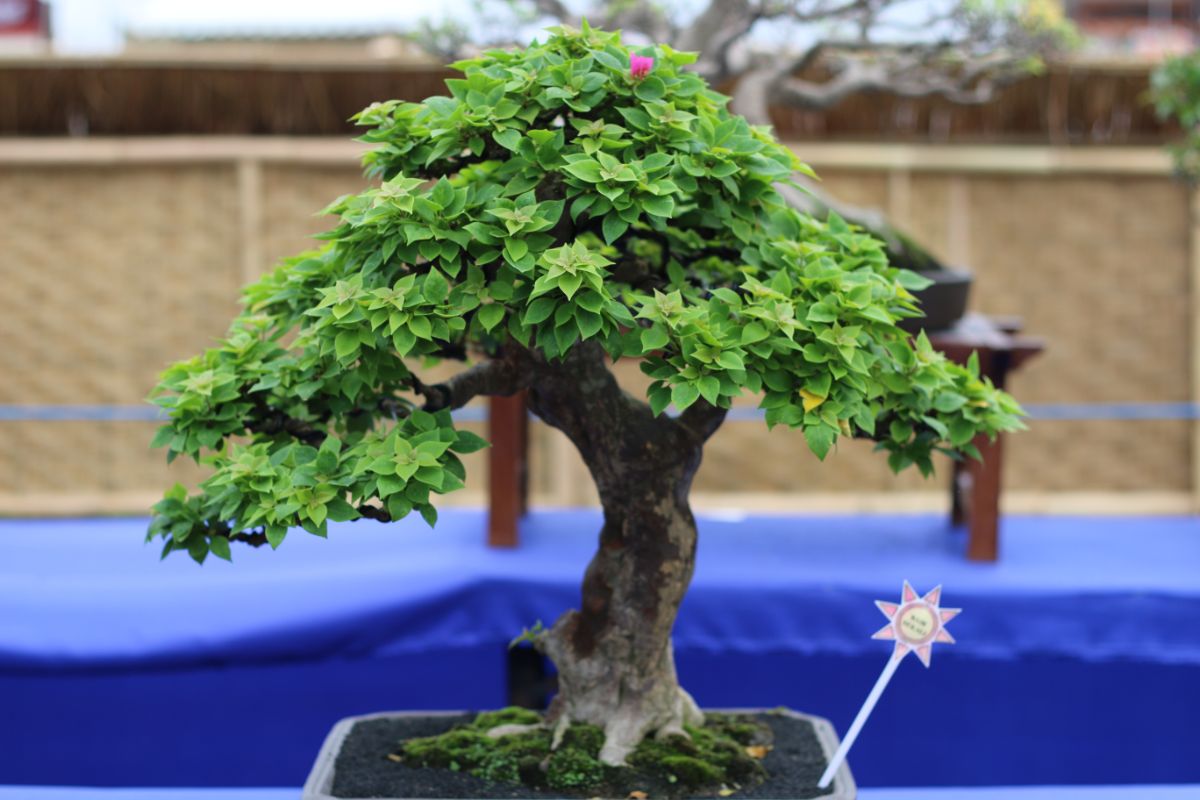
Bougainvillea is an ideal shrub specimen to train into a bonsai.
There are a lot of advantages to growing the bougainvillea bonsai. They are fast-growing plants; they serve you with repeated blooms throughout the year and offer great aesthetics with their beautiful shape and brighten your space with their overly colorful flowers.
We're not done with its unique advantages yet. Another good thing is that any bougainvillea can be used to develop a bonsai.
Furthermore, most gardeners have realized that compared to other bonsai species, the bougainvillea takes little time to train. They attain the right size and shape in record time.
After the growing season, it must have grown to size, ready to be displayed. This is unlike other species that take years to train.
With our detailed care guide above, you will have no issues whatsoever in getting started with the bougainvillea bonsai and establishing it successfully.




